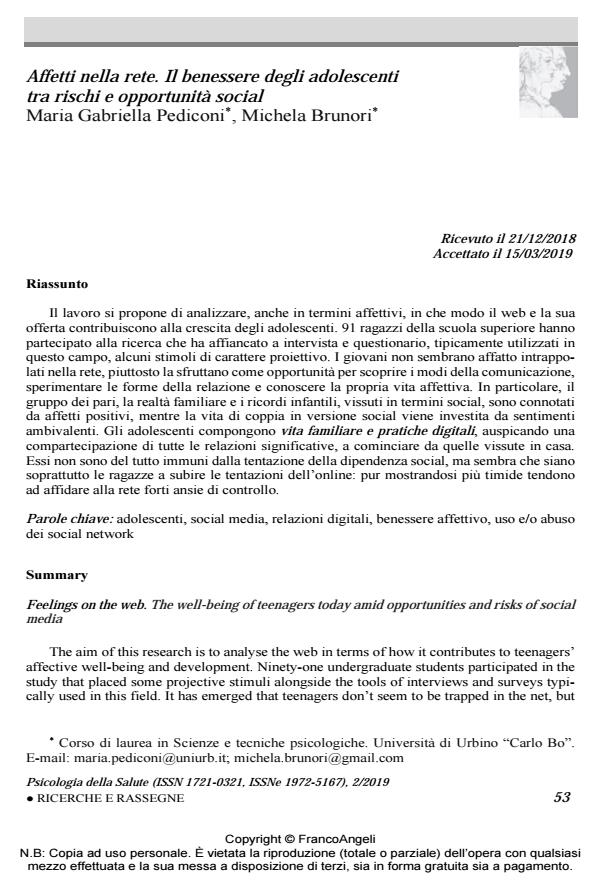Feelings on the web. The well-being of teenagers today amid opportunities and risks of social media
Journal title PSICOLOGIA DELLA SALUTE
Author/s Maria Gabriella Pediconi, Michela Brunori
Publishing Year 2019 Issue 2019/2
Language Italian Pages 27 P. 53-79 File size 363 KB
DOI 10.3280/PDS2019-002003
DOI is like a bar code for intellectual property: to have more infomation
click here
Below, you can see the article first page
If you want to buy this article in PDF format, you can do it, following the instructions to buy download credits

FrancoAngeli is member of Publishers International Linking Association, Inc (PILA), a not-for-profit association which run the CrossRef service enabling links to and from online scholarly content.
The aim of this research is to analyse the web in terms of how it contributes to teenagers’ affective well-being and development. Ninety-one undergraduate students participated in the study that placed some projective stimuli alongside the tools of interviews and surveys typical-ly used in this field. It has emerged that teenagers don’t seem to be trapped in the net, but ra-ther they use it as an opportunity to discover different ways of communicating, to experience relationships and to understand their own feelings. In particular, the peer group, home life and childhood memories, marked by the use of technology, are coloured by positive feelings, whereas sentimental relationships are characterised by ambivalent feelings. Adolescents com-bine family life and digital practices, hoping for the involvement of all significant relationships, starting from those experienced at home. Boys are not immune from the temptation of online addiction, but girls in particular tend to suffer negative effects. Although they show more dif-fidence, they put their intense anxiety of control into the hands of the web.
Keywords: Adolescents, social media, digital-mediated relationship, emotional wellbeing, use and/or abuse of social network sites
Maria Gabriella Pediconi, Michela Brunori, Affetti nella rete. Il benessere degli adolescenti tra rischi e opportunità social in "PSICOLOGIA DELLA SALUTE" 2/2019, pp 53-79, DOI: 10.3280/PDS2019-002003